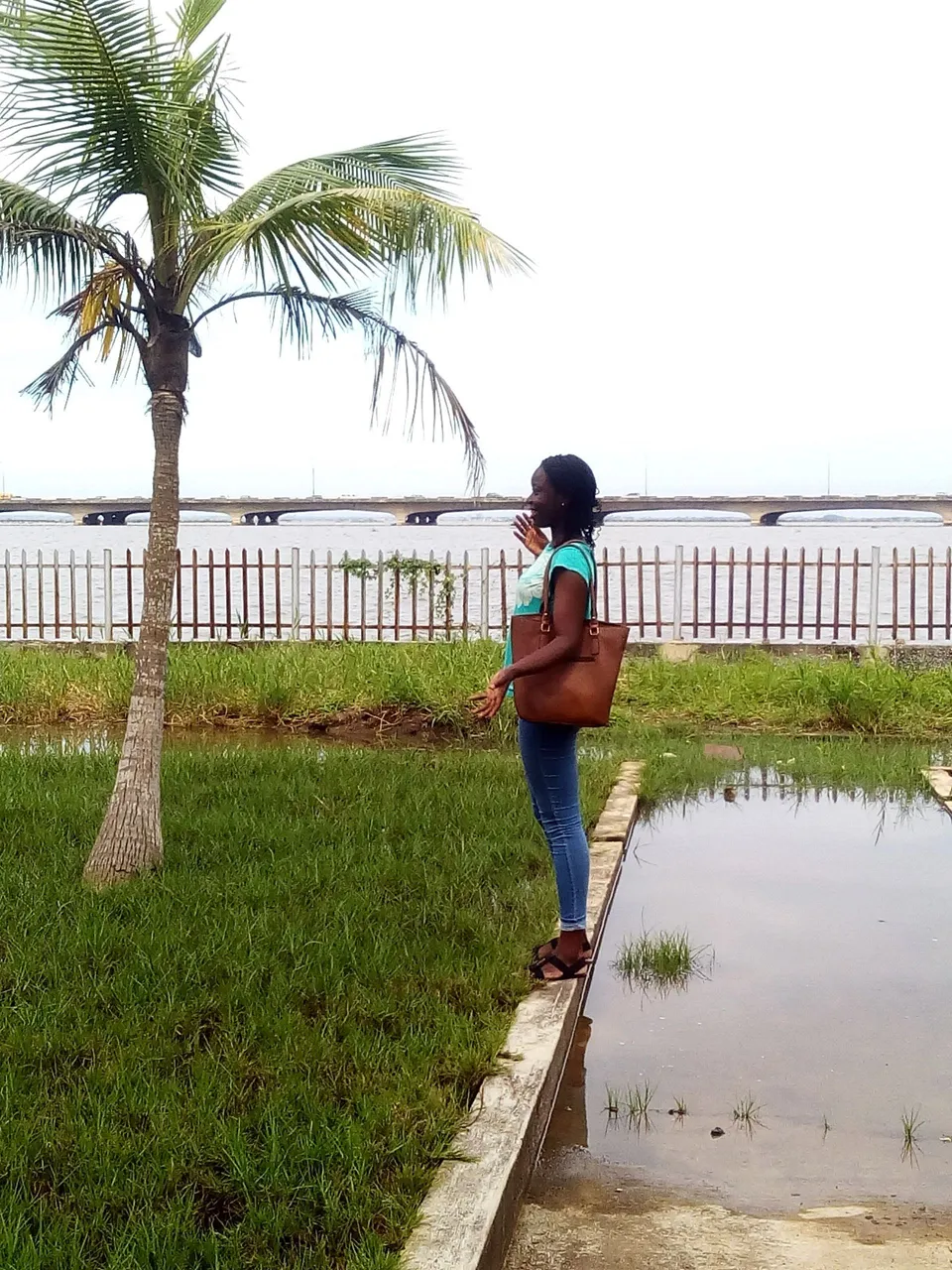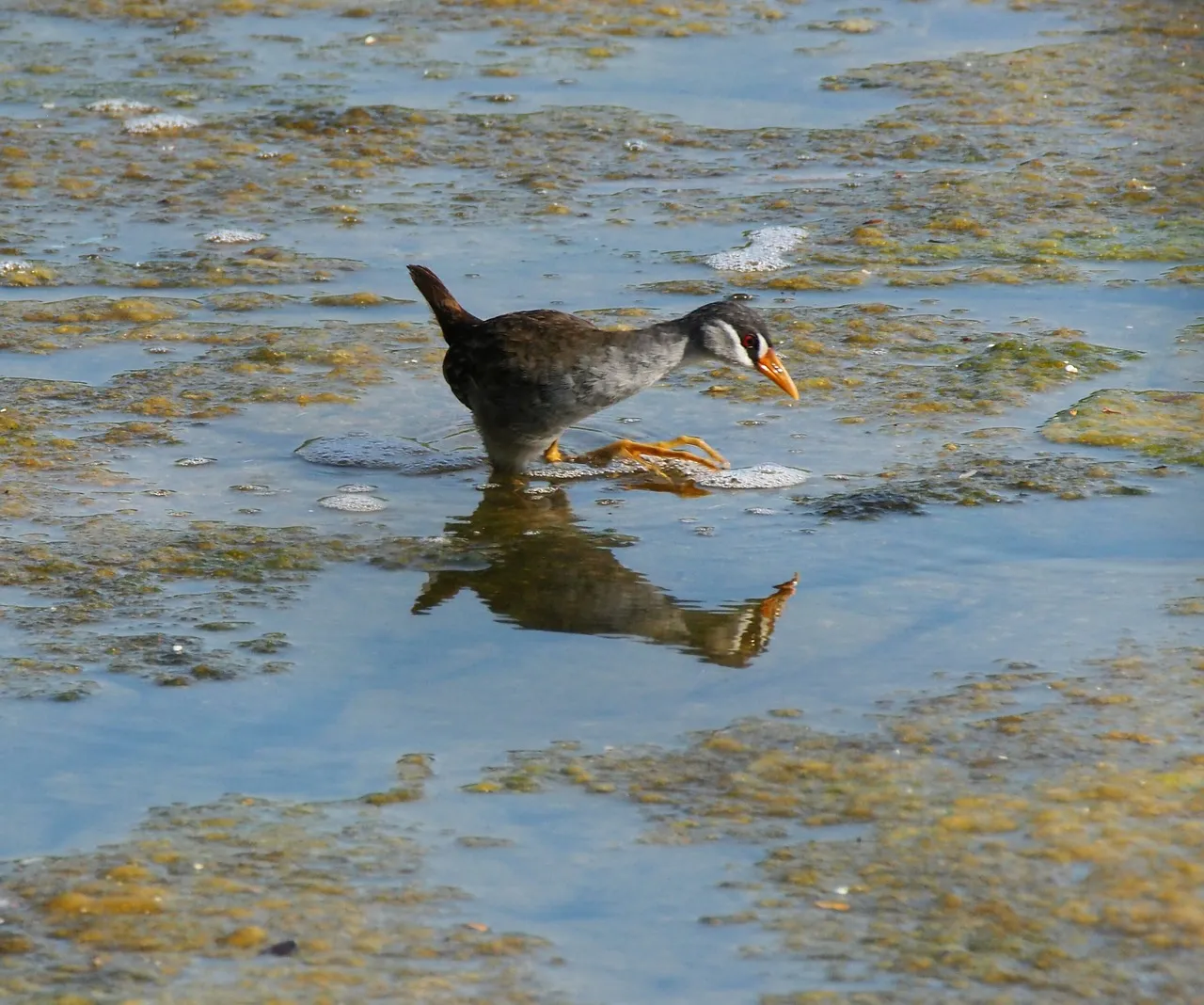Hello fellow Steemians, so on Tuesday I went to my school (University of Lagos) to continue with my clearance process. It is a very stressful process that involves one looking for different lecturers to sign different documents, it is infact very annoying and time consuming.
While I was waiting for my project supervisor to get to school, I just decided to wait somewhere else as my Faculty was just crammed up.
Then I decided to go to the "Lagoon front" because it's not too far from my faculty and because it's always peaceful and quiet. The name was probably gotten because of the location of the garden, it's right in front of the lagoon overlooking the third-mainland bridge (the second longest bridge in Africa and the longest in West Africa).
It could be a wonderful sight depending on the time of the day you're there.
Due to the fact that I wasn't really doing anything I got to observe the things around me, one thing I noticed is there were lot of crabs present in the place, the garden looked very neglected and as someone who did environmental biology while in school, I soon realized that the lagoon front is an example of a "wetland ecosystem".

An area of the lagoon front
Most wetland ecosystems if not degraded, they are usually viewed as unimportant and this is probably as a result of people having little or no knowledge about the importance and benefits of this amazing ecosystem; hence, the reason for this post.

a random picture of me at the lagoon front
The General Concept
From the way it is named, a wetland ecosystem is basically an area filled with water either permanently or seasonally.
According to the United states Environmental Protection Agency; Wetlands are areas where water covers the soil, or is present either at or near the surface of the soil all year or for varying periods of time during the year, including during the growing season.
Most times, It can be described as an interphase between the aquatic and terrestrial ecosystem, but not all since some wetlands can exist in isolation from water bodies, in this case they'll be found in depressions and their source of water will be the ground water and precipitation. In a wetland, saturation is a dominant factor.
Wetlands mostly result from flooding of the area and it is usually dominated by hydrophillic(water loving) plants. Due to the nature of this ecosystem, the type of plants it has are those that are well adapted to such high level of saturation.
The wetland ecosystem shares some characteristics of the terrestrial ecosystem such as the presence of rooted plants and the characteristics of the aquatic ecosystem such as the presence of standing water. It has some unique features that differentiates it from other ecosystems such as the presence of hydric soil and hydrophilic plants.
How do you identify a wetland ecosystem??
There are indicators used in identity wetland ecosystems;
Hydrologic indicators: In a typical wetland, the presence of standing or flowing water is usually seen especially during the growing season. Water marks could be seen on trees present in the area too and they show that water periodically cobers the area to the depth shown on the tree.
Soil indicators: Wetlands usually have a bluish-gray colour below the soil surface and the odor of rotten egg. This is as a result of hydrogen sulphide as a byproduct of the decomposing plant materials. Wetland soils mainly contain decomposed plant materials in form of peats and muck.
Vegetative indicators: The trees here are usually shallow rooted, mostly the roots grow from the plant stem. The plants can also withstand high soil saturation for a long time. Wetlands have a vast array of plant species.
The Importance of Wetland Ecosystems
At this point you might be wondering what sort of importance the wetland ecosystem has, right? Well let's get right to it!!
It often functions as a flood break; when rivers or water bodies overflow, wetlands absorb and slow down the flood Waters. This ability of the ecosystem in turn helps to protect lives and properties from the effect of flooding
They help to absorb excess nutrient sediment and pollutants before they reach water bodies, Hence it acts in pollution control.
Wetlands absorb carbon dioxide and other green house gases, thereby reducing their effect on the environment and also climate change
The vegetation of the ecosystem could help prevent erosion with their roots that holds the soil in place
The ecosystem has a wide array of species so it also aids in conserving them.
It could be used for agricultural purposes such as livestock grazing,
Recreational activities such as swimming, boating, fishing and bird watching.
Fun fact: wetlands purify water and can be referred to as kidneys
They hold water and can be referred to as sponges.
As important as this ecosystem is, the ecosystem is underrated and thus is degraded and lost at a high rate due to activities such as;
Hydrologic alteration; change in the quality and quantity of water found in the ecosystem
Urbanization
Industrialization
Using wetlands as a dumpsite
Mining.
All these activities usually lead to the loss of biodiversity in the ecosystem, or even totally erase such an ecosystem.
Wetland Management
This could be achieved by;
Using buffers: such as bands of vegetation along the egdes of the wetland. This could reduce human activities to a certain extent
Enforcing laws that protect wetlands
Through regular and consistent monitoring too
Enlightening and educating people on the importance and values ( I think that's what I just did)
To conclude, Wetlands while usually underrated by most, is a very important ecosystem that offers a lot of ecosystem services to us and it would be In our best interest if this ecosystems continue to exist!!
Thanks for reading through✌
Comments and questions will be very welcome.
Sources
Why are wetlands important

